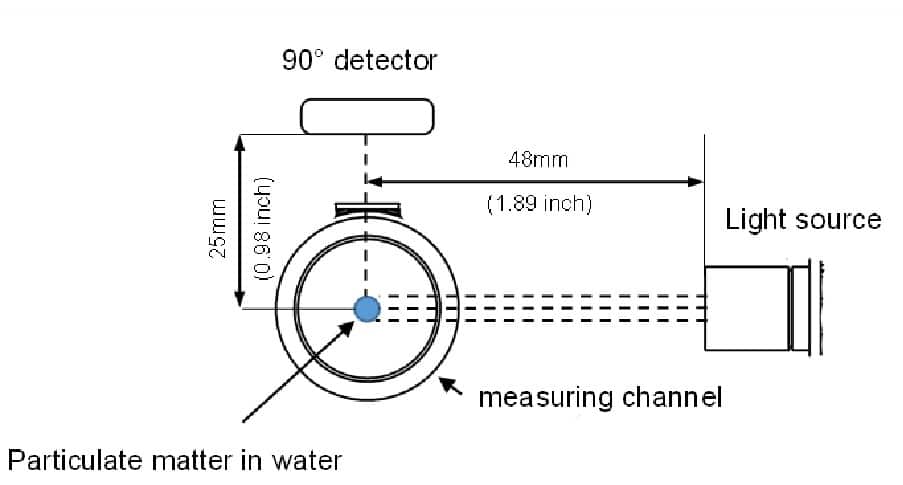Introduction: Clean and safe drinking water is a fundamental necessity for human health and well-being. Monitoring water quality is crucial to ensure that it meets regulatory standards and remains free from contaminants. One important parameter that is frequently measured in drinking water applications is turbidity. Turbidity refers to the cloudiness or haziness of water caused by the presence of suspended particles. To accurately monitor and maintain water quality, real time online turbidity sensors have become indispensable tools in the field of drinking water treatment and management.
What is a Turbidity Sensor? A turbidity sensor is a device designed to measure the amount of light scattered or absorbed by suspended particles in water. It provides a quantitative assessment of the water’s clarity, giving water treatment professionals valuable insights into the presence and concentration of particulate matter. Turbidity sensors utilize various principles to detect and quantify turbidity, including nephelometry, laser scattering, and absorption.
Applications in Drinking Water: Turbidity sensors play a vital role in several aspects of drinking water management, from treatment plants to distribution systems. Here are some key applications where turbidity sensors are utilized:
1. Water Treatment Processes: Turbidity sensors are deployed in water treatment plants to monitor the efficiency of coagulation, flocculation, and sedimentation processes. By continuously measuring turbidity levels, operators can adjust the dosage of chemicals and optimize the treatment process to effectively remove suspended particles and enhance water clarity.
2. Filtration Monitoring: In filtration systems, turbidity sensors are employed to assess the performance of various filters, such as sand, multimedia, or membrane filters. By monitoring turbidity levels before and after the filtration process, operators can ensure the filters are functioning properly and identify any anomalies or breakthrough events.
3. Early Detection of Water Quality Issues: Turbidity sensors act as early warning systems for detecting changes in water quality. Sudden spikes in turbidity can indicate the presence of contaminants or excessive sedimentation, alerting operators to potential issues that require immediate attention. By addressing these problems promptly, the risk of compromised drinking water quality can be minimized.
4. Distribution System Monitoring: Turbidity sensors are also utilized in the monitoring of drinking water distribution networks. By continuously measuring turbidity levels at different points within the system, operators can identify areas with deteriorating water quality, pinpoint potential sources of contamination, and take necessary actions to maintain the integrity of the distribution system.
Benefits of Turbidity Sensors: The use of turbidity sensors in drinking water applications offers several advantages:
1. Real-time Monitoring: Turbidity sensors provide continuous, real-time measurements, allowing for rapid detection of changes in water quality. This enables prompt response to any issues, ensuring the delivery of safe drinking water to consumers.
2. Improved Treatment Efficiency: By accurately measuring turbidity levels, water treatment processes can be optimized, leading to enhanced removal of suspended particles and improved overall treatment efficiency.
3. Regulatory Compliance: Turbidity measurements are a key parameter regulated by water quality standards. Utilizing turbidity sensors helps water utilities meet regulatory requirements and maintain compliance with health and safety guidelines.
4. Preventive Maintenance: Turbidity sensors enable proactive maintenance by identifying filter breakthroughs or deteriorating water quality before they become critical issues. This helps to minimize downtime, reduce operational costs, and extend the lifespan of filtration systems.
Conclusion: Turbidity sensors have revolutionized the way drinking water quality is monitored and managed. By providing accurate and real-time measurements of water turbidity, these sensors help ensure the delivery of safe and clean drinking water to consumers. With their widespread adoption in water treatment plants and distribution systems, turbidity sensors have become indispensable tools in safeguarding public health and maintaining regulatory compliance in the realm of drinking water management.
Uliksensor offers top-notch quality turbidity sensors for drinking water with measure range 0-100NTU, which enables same precision, same reliability with top brands. While it still entails some advantages: much more excellent price, much less volume, more faster delivery time, easier maintain way. If any inquiry regarding drinking water application, please feel free to contact us for more information.

